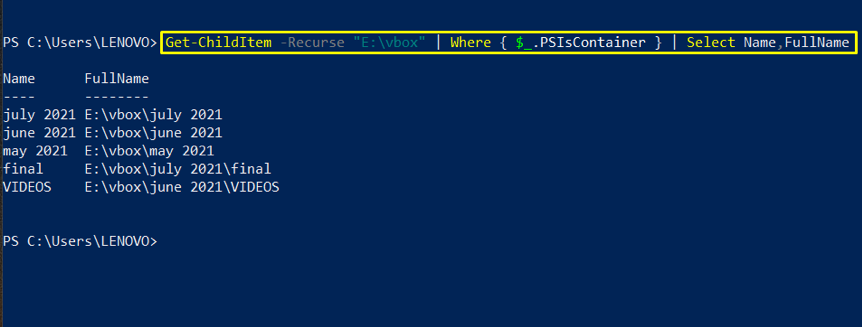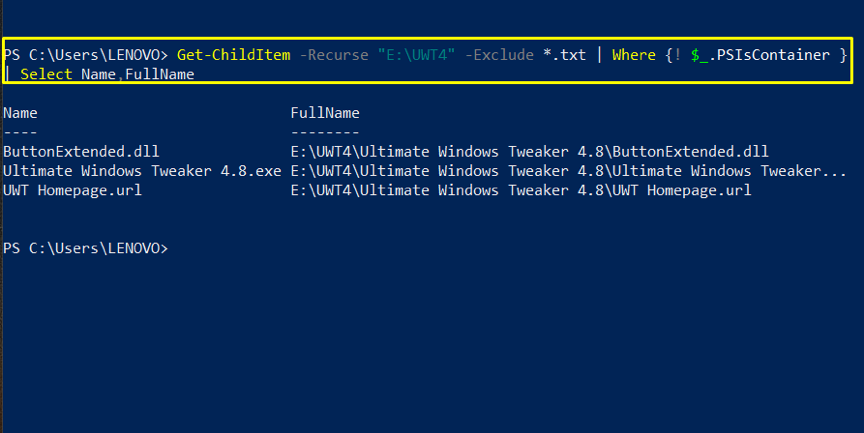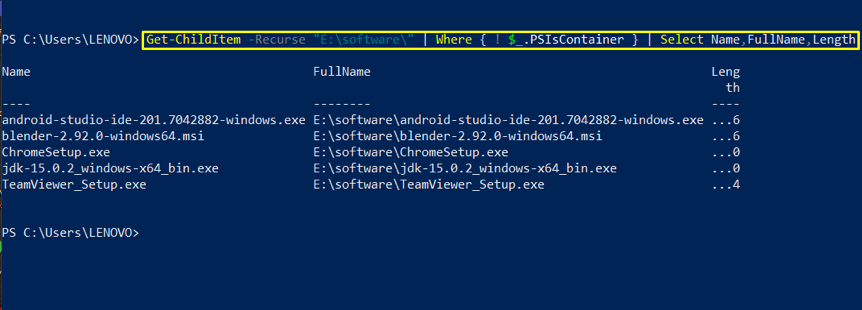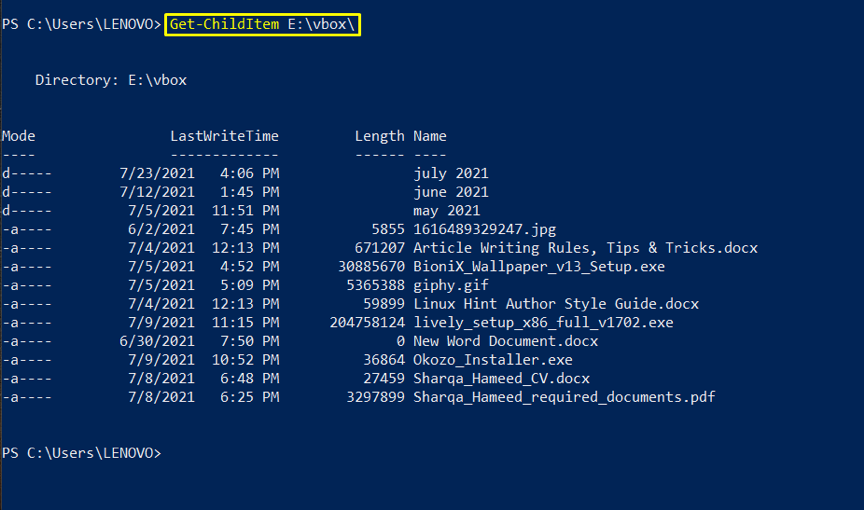Powershell List All Files In Directory
Powershell List All Files In Directory - Web Mar 2 2013 nbsp 0183 32 PowerShell Command For Directory List into Txt File For Full Path Directory List Folder amp File to text file ls r FullName if PsIsContainer gt filelist txt For Relative Path Directory List Folder amp File to text file ls r FullName substring pwd Path length 1 Web Dec 8 2022 nbsp 0183 32 This article discusses how to deal with specific file and folder manipulation tasks using PowerShell Listing all files and folders within a folder You can get all items directly within a folder using Get ChildItem Add the optional Force parameter to display hidden or system items Web Jan 4 2015 nbsp 0183 32 1 It is worth mentioning that Dir is an alias for Get ChildItem The OP s original code works at least in PowerShell 3 0 Your code translates to Get Childitem Recurse c path Get Childitem See Get Alias Alias dir gt Get ChildItem
In the case that you are searching for a simple and efficient method to improve your efficiency, look no further than printable design templates. These time-saving tools are simple and free to use, offering a variety of benefits that can help you get more done in less time.
Powershell List All Files In Directory

List Files In A Directory With PowerShell
 List Files In A Directory With PowerShell
List Files In A Directory With PowerShell
Powershell List All Files In Directory First of all, printable templates can help you stay arranged. By offering a clear structure for your jobs, to-do lists, and schedules, printable templates make it easier to keep everything in order. You'll never ever need to stress over missing due dates or forgetting crucial jobs once again. Second of all, using printable design templates can help you save time. By eliminating the requirement to produce new documents from scratch whenever you require to finish a task or prepare an event, you can concentrate on the work itself, instead of the documents. Plus, lots of templates are customizable, permitting you to customize them to suit your needs. In addition to conserving time and remaining organized, utilizing printable templates can likewise help you stay inspired. Seeing your development on paper can be an effective motivator, encouraging you to keep working towards your objectives even when things get tough. In general, printable templates are a great way to enhance your efficiency without breaking the bank. So why not give them a shot today and start attaining more in less time?
Python Files In Directory Online Discounted Save 53 Jlcatj gob mx
 Python files in directory online discounted save 53 jlcatj gob mx
Python files in directory online discounted save 53 jlcatj gob mx
Web Mar 30 2021 nbsp 0183 32 In cmd you can run C path gt dir A it will list you all the files in a folder including the hidden git directory for example You can run dir in cmd and PowerShell You can run dir A in cmd but can t run dir A in PowerShell
Web Oct 7 2020 nbsp 0183 32 I use the following commands on PowerShell to create a list of all files and subfolders within a specific directory get childitem path c users username desktop test recurse select name So assuming I have a folder called quot test quot on my desktop and within this folder I have three files and one subfolder which itself contains further files
How To List All Files In A Directory In Java
 How to list all files in a directory in java
How to list all files in a directory in java
Powershell Get File Details Yooapo
 Powershell get file details yooapo
Powershell get file details yooapo
Free printable templates can be an effective tool for improving performance and accomplishing your goals. By picking the right templates, including them into your routine, and individualizing them as needed, you can simplify your daily jobs and make the most of your time. Why not provide it a shot and see how it works for you?
Web Jun 28 2019 nbsp 0183 32 Getting all files in a directory with PowerShell Get ChildItem I have been using the following command to get the MD5 hashes for all files in a directory and all its subdirectories Get FileHash Algorithm MD5 LiteralPath Get ChildItem quot quot Recurse However I realised that a few of the subdirectories have files with no file extension
Web This example gets the child items from a file system directory The filenames and subdirectory names are displayed For empty locations the command doesn t return any output and returns to the PowerShell prompt The Get ChildItem cmdlet uses the Path parameter to specify the directory C Test